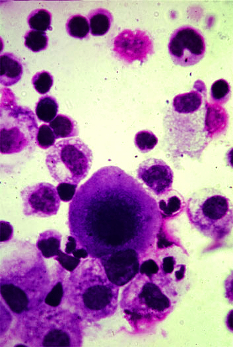T Cell blocker cracked open
 Monash researchers are working on a way to increase the ability of the body’s own T cells to target cancer.
Monash researchers are working on a way to increase the ability of the body’s own T cells to target cancer.
Immunotherapy is revolutionising cancer treatment, allowing the immune system to destroy cancer cells.
However, several molecules restrain the ability of T cells to target cancer cells.
Scientists are now developing approaches to limit this restraining effect to improve the effectiveness of cancer immunotherapy.
New research published in Science Immunology has determined how an inhibitory molecule called LAG3 works, providing a new target to improve the effectiveness of immunotherapy for certain forms of cancer.
The paper is the first to show the crystal structure of a human LAG-3/HLA-II complex and provides a better foundation for development of therapeutics that block LAG-3.
Specifically, research resolves how the human LAG-3 receptor binds to HLA II molecules.
“The way the PD-1 and CTLA-4 immune checkpoint molecules bind to their respective ligands has been resolved for many years,” says first author Dr Jan Petersen.
“However, the resolution of the interface between another important checkpoint molecule, LAG-3, and its main ligands, HLA-II molecules, has remained elusive.
“Solved using data collected at the Australian Synchrotron, a structure of a LAG-3/HLA-II complex provides a structural foundation … for future development of antibodies and small molecule therapeutics designed to block LAG-3 activity.”
The findings were made at Monash University’s Biomedicine Discovery Institute (BDI), in collaboration with Immutep.








 Print
Print